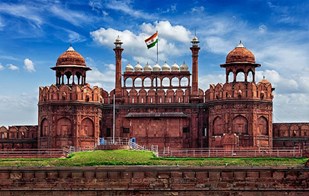The names of the chief architect who worked on the Taj have been noted. Ismail Afandi, who designed the hemispheres and built the domes was from Turkey. Qazim Khan came from Lahore to cast the gold finial that would top the dome. Chiranji Lal was called from Delhi to pattern the mosaic. From Shiraz in Persia came master calligrapher, Amanat Khan. Stone cutter Amir Ali was from Baluchistan. Ustad Isa of Tukey is however credited to have been the main architect. It is believed that his design embodied much of what the Emperor wanted to express.




















